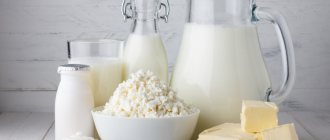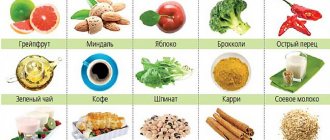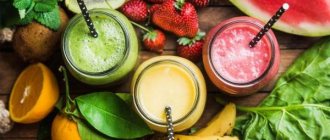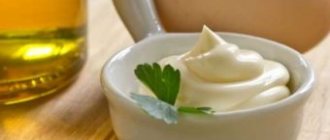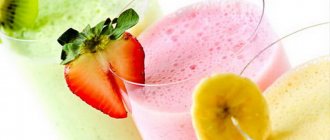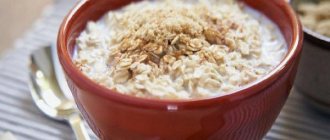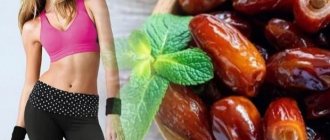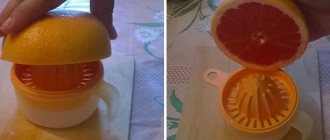Every day in the kitchen we prepare everyday dishes and don’t even think about the correct proportion of ingredients, but as soon as we decide to try a new recipe, everything becomes much more complicated. In order to obtain exactly the taste and consistency described in the recommendations, it is necessary to cook strictly observing the weight and ratio of each ingredient. It is at this moment that the question often becomes relevant: how to weigh food without scales at home? Kitchen scales are a very convenient thing, but not every home has one, so housewives often have to use certain tricks to determine the weight of ingredients for a recipe.
Important information
Every kitchen must have a glass, a teaspoon and a tablespoon. It is with their help that you most often have to measure products. It is only important to know the volume of the glass in advance, since they come in 200 or 250 ml. New dishes, as a rule, are larger in size, and the cut glass known for generations holds strictly 200 ml up to the rim.
How to weigh food without scales using spoons? In this case, liquids should be poured strictly to the brim, viscous products should be collected with a “slide”, and bulk products should be collected with a slight top. The standard weights given below apply only to those dry substances that are placed loosely in spoons and glasses, without compaction.
It should also be remembered that cereals and any bulk materials must be dry before weighing. Vegetables - washed and peeled, also chopped, and if necessary, measure out an amount equal to pieces. The same recommendations apply to fruits. Before weighing meat without a scale, the product should not be washed so that it does not become saturated with water. If the recipe uses only pulp, without fat and bones, then you only need to weigh it, after first separating the desired piece, washing it and blotting it with a napkin.
How to measure honey weight correctly
Honey is often called a healthy alternative to sugar.
It is truly rich in vitamins and minerals which have a ton of health benefits. To weigh bee products in the kitchen, you will need a household culinary scale - this is the most accurate way, but not every household has a smart device. Standard kitchen containers will help you determine the approximate amount of treats: cutlery of different sizes, a glass, a jar (half-liter and liter).
When measuring the required amount of sweetness, consider the following nuances:
- the container has its own weight;
- a certain amount of product remains on the surface of the measuring spoon or glass - take it “with a reserve”;
- Sugaring is burdensome: the thicker and denser the structure of the product, the more it will fit into the measuring container.
The secret to high volume
If the weight of liquids and bulk ingredients can be easily determined using spoons or a glass, then how to weigh large products without scales remains a question. In this case, measuring containers should be used in pots or bowls, the volume of which is known and measured in liters.
Having tightly packed the necessary ingredients into them, you can approximately determine their weight by comparing them with the volume of the container.
If a more accurate measurement is needed, then you should prepare 2 pans of such a size that one fits freely into the other. Fill a large container with water and place it in the sink. Pour exactly a kilogram of sugar, salt or another product that is in the kitchen in the exact weight into a smaller pan. Now you need to lower the small container into the larger one so that the water from the lower pan reaches the edges of the upper one. So how to weigh food without scales using scrap materials and what does sugar have to do with it? Now you should pour it out, place what you actually need to weigh into a small container, and also lower it into a pan with the same water. As soon as the liquid reaches the edges, there is exactly a kilogram of the required product in the upper container.
How to weigh food without scales
To understand the meaning of the calculations, remember two simple rules :
- liquid and bulk food products can be measured with a spoon;
- berries, fruits, vegetables are measured individually.
Now let's talk about how many products fit in different containers, and how these containers can be replaced. With the help of a simple “cheat sheet” you can easily figure out how much a liter of water weighs, what the average weight of an apple or tomato is, and you can also make other mathematical calculations that are so necessary in cooking.
Volume of liquids
In this case, weighing is not even required, since all pouring ingredients are indicated in recipes in milliliters, not grams. To determine their required volume, you will need a measuring cup. If you can’t find it in the kitchen, then an ordinary faceted one, a tablespoon or a teaspoon for small scales, will do.
It is important to remember that the same volume of different liquids will always weigh differently. For example, a glass of water will always contain as many milliliters as corresponds to its volume, but there will always be less vegetable oil, since its density is less.
Approximate Standards
If you don’t have time to delve into such nuances, you can follow approximate recommendations on how to weigh food without scales. According to them, a teaspoon contains 5 g of liquids, 4 g of cereals, 10 g of salt or sugar and 3 g of flour. A tablespoon holds 20 g of liquids, the same amount of cereals, 15 g of salt or sugar and 25 g of flour. This applies only to a spoon with a medium heap, and if, when scooping up loose ingredients, the excess easily rolls off on its own, then with flour it is more difficult. You can also fill a spoon with a heap of 5-7 cm, since its powdery consistency simply will not allow the compacted product to fall out. Having collected this amount, you should understand that the flour will weigh 35-40 g.
In a standard glass of water or milk there will be 200 grams, vegetable oil 250 grams, cereals and other bulk grains - 200 grams, and flour to the rim - 180 grams.
Accuracy - the politeness of kings
To measure the weight of products without scales, you need to follow some rules that will help you strictly follow the recipe. For preparing appetizers, soups, main courses and side dishes, this is not so critical. However, in some cases, such as when baking bread, an incorrect ratio of liquid to flour can cause fermentation to slow down. If there is a lack of moisture, the dough does not rise well and the bread has a dry, crumbly texture. If, on the contrary, there is too much moisture, the baked goods will turn out heavy, mushy, with a soggy and sticky crumb.
Vegetable weight determination
Sometimes all the above recommendations do not help to approximately weigh food without scales. How can vegetables be placed in a glass or pan? After all, empty space will certainly form between them, distorting the final result. To determine the weight of such products, a standard for their gramming per piece is often used. So, a head of white cabbage weighs on average 1.1-1.5 kg, although in the cold season you can also find heads weighing 4-5 kg on the shelves. One potato tuber takes on average 100 g, onion - 70 g, carrots - 75 g, beets - 100-150 g, tomato - 75-100 g, cucumber 50-100 g, eggplant - 150-200 g, celery root - 40 -60 g, cauliflower – 800 g, radish – 70-100 g, parsley root – 50 g.
How much does honey weigh?
Honey comes in different consistencies and thicknesses. For example, a thick product that has already been candied will weigh less than liquid nectar.
Adds weight and moisture contained in the treat:
- collected in dry summer, in the absence of precipitation, it contains less than 15% moisture;
- in the rainy season, the amount of moisture will increase to 25% or higher.
Humidity also depends on the variety:
- honeydew is drier and thicker, it contains more natural glue than water. This variety is the earliest to be candied;
- a liquid variety that is rarely seen candied because it contains a lot of water is the acacia product.
The average moisture content is 18%/100 g of product.
Standards for fruits and berries
Recommendations on how to weigh food without scales at home contain approximate values for popular berries and fruits. So:
- medium apple – 100-150 g;
- pear – 120-150 g;
- quince – 150-200 g;
- banana – 100-200 g;
- orange – 100-150 g;
- lemon – up to 100 g;
- figs – 40 g;
- plum – 30 g;
- apricot – 20-30 g.
As for berries, it is better to measure their weight with a glass or spoon. A standard 200 ml glass container will fit:
- strawberries – 120 g;
- raspberries – 150 g;
- cherries or sweet cherries – 130 g;
- blueberries – 160 g;
- blackberries – 150 g;
- cranberries – 120 g;
- blueberries – 160 g;
- lingonberries – 110 g;
- currants – 120-140 g;
- mulberries – 150 g;
- gooseberries – 170 g.
How to select and store flour
In the store you need to choose a tightly sealed package. Flour in torn packaging comes into contact with air. In addition, bugs appear in such packaging.
- Flour should be stored in a cool, dry place. The shelf life of flour is limited, so manufacturers recommend using it within 6 months. If flour is stored in air, the oils oxidize, which is why it acquires a rancid taste. In hot weather, flour should be stored in the refrigerator.
- Flour should not lie next to washing powder, onions or other products that have a strong odor.
- If you have space in the freezer, it is good to pack the flour in a moisture-proof, airtight container. Flour can be stored this way for a couple of years.
- If the flour has an unpleasant odor, a changed color, or insects are noticed, be sure to throw away this product.
- Whole wheat flour should be stored in a cool place, particularly in the refrigerator, at all times, as the natural oils at room temperature will cause the flour to go rancid.
- Flour is not a scarce product. It can be purchased at any store, so there is no need to buy in stock. Focus on the amount of flour you need for 2-3 months.
- You can put a bay leaf in the container where the flour is stored to protect against insects. These leaves are natural insect repellents.
Liquids and viscous products
How to weigh products that can completely fill the container space without scales? This shouldn't cause any problems at all. Measuring containers, spoons or glasses are used. A teaspoon contains:
- 5 g of water, vinegar, cream, milk, any juice and melted butter;
- 3 g vegetable oil;
- 4 g melted margarine;
- 7 g berry puree or liqueur;
- 8 g tomato sauce;
- 9 g liquid honey;
- 10 g sour cream, tomato paste;
- 12 g condensed milk or jam;
- 15 g jam;
- 20 g honey or jam.
The same products in the same order will take up 18 g, 20 g, 15 g, 20 g, 25 g, 30 g, 25 g, 30 g, 40 g and 45 g in a tablespoon, respectively. It is noticeable that even the same The weight of the products in the new container is no longer ascending. A similar situation arises with measurements in glasses, so it is impossible to calculate exactly how many grams there will be in a large container based on the data from teaspoons; the result will only be approximate.
So, in a faceted glass, the total volume up to the rim is 200 ml and it will be filled with exactly water, milk, cream, vinegar and juice. Sour cream in the same container will already be 210 g. Vegetable oil, melted margarine or butter - 180-190 g, tomato sauce - 180 g, jam - 185 g, melted fat - 245 g, jam - 280 g, berry puree - 300 g, and honey - 330 g.
Harm of honey
Honey is a strong allergen, so you need to be careful when consuming it: it can cause allergic asthma, skin rashes and anaphylactic shock. You should not heat honey above 50-60 degrees - at this temperature it loses a significant part of its beneficial properties and turns into ordinary sweetness.
Due to the high calorie content of honey, it is not recommended to be consumed if you are obese; you should also use it with caution if you have diabetes. Honey can cause dental caries, so be sure to rinse your mouth with water after drinking honey.
Buckwheat honey, flower honey, linden honey, dandelion honey, in combs, artificial: calorie content
As already mentioned, the calorie content of honey is largely determined by its type. It is believed that light varieties of this beekeeping product are lower in calories than its dark varieties. And they are even recommended for people suffering from diabetes.
The aroma and shade of honey depend mainly on the floral raw materials from which the bees collect nectar. The composition of this product is also influenced by phytoncides and pollen grains of specific honey plants. Honey collected by bees from one type of plant is called monofloral, and from different types - polyfloral. Each type of honey has certain properties.
Sources
- https://mirfermera.ru/917-skolko-gramm-meda-v-stolovoy-lozhke.html
- https://spravomed.ru/skolko-gramm-meda-v-stolovoj-i-chajnoj-lozhkah.html
- https://MedVoBlago.ru/med/skolko-gramm-meda-v-lozhke
- https://food-wiki.ru/skolko-gramm-meda-v-stolovoj-lozhke/
- https://PchelGid.ru/skolko-meda-v-chajnoj-i-stolovoj-lozhke/
- https://vsovetmedik.ru/skolko-gramm-v-chajnoj-lozhke-meda.html
- https://diet-tips.ru/pro-edu/energeticheskaya-cennost-meda.html
Bulk
For cereals and other products, there are also certain scales according to the volume of containers used for measuring.
A teaspoon contains 10 g of salt, sugar, egg powder, starch and flour. In the same spoon you can measure 7 g of coffee or citric acid, 9 g of cocoa, 12 g of baking soda, 5 g of dry gelatin or poppy seeds.
A tablespoon will accordingly measure the weight of the same foods in the same order: 30 g, 25 g, 25 g, 30 g, 30 g, 20 g, 25 g, 28 g, 15 g and 18 g.
Cereals, as a rule, occupy 4 grams in a teaspoon, 20-25 g in a tablespoon, and 150-170 g in a glass.
In general, a glass of 200 g can hold only 150 g of salt and starch, 180 g of sugar, 135 g of poppy seeds, 140 g of ground nuts, and 160 g of powdered sugar.
Table of ratio of volumes in containers
| cup | volume, ml | tablespoon, pcs. | teaspoon, pcs. |
| 1 | 240 | 16 | 48 |
| ¾ | 180 | 12 | 36 |
| ⅔ | 160 | 11 | 32 |
| ½ | 120 | 8 | 24 |
| ⅓ | 80 | 5 | 16 |
| ¼ | 60 | 4 | 12 |
| ⅛ | 30 | 2 | 6 |
| 15 | 1 | 3 | |
| 5 | 1 |
Products for diet
A very pressing question is how to weigh foods without scales for a diet. In order to correctly calculate the calories consumed, they have to determine the weight of not only raw materials, but also already prepared dishes or products that are immediately ready for consumption. Having allowed yourself to snack on packaged cookies, you can easily calculate the weight of one treat by dividing the total weight of the pack by the number of cookies. The average weight of marshmallows is 42 g, marmalade 20 g, gingerbread 30 g, and biscuit cookies 10 g. A slice of bread takes on average 20 g, a slice will be heavier and weighs approximately 50-80 g.
Store-bought buns are always labeled and do not need to be weighed. A circle of sausage weighs on average 5 g, a finished cutlet weighs 80-100 g, and a chop weighs 200 g.
It must be remembered that when cooked, cereals increase in volume depending on the addition of water, pasta - 2 times, meat, on the contrary, decreases by approximately 50%. And in fact, it’s not difficult to weigh food without scales. Cottage cheese as an immediately ready-to-eat product can be measured in a glass. In a faceted container it will take no more than 130 g, depending on the fat content. Dried fruits and other dietary sweets should also be measured in glasses. It will contain 130 g of raisins and 50 g of dried fruit.
A medium-sized chicken egg without a shell weighs 40 g, and a large one weighs 60 g. If you need to eat the yolk and white separately, you need to remember that depending on the size of the egg itself, the weight of only the white changes. It can be 20-40 g, and the yolk always weighs 20 g.
What affects the weight of honey in one teaspoon
Animal and human studies have shown that replacing regular sugar with honey helps lower blood pressure, as well as cholesterol and triglyceride levels in the blood.
When measuring sweetness with a small spoon, keep in mind that the weight of the api product is not a constant value. This indicator may vary depending on the amount of moisture in the product, mass density and state of aggregation:
- a fluid bee product is lighter than a candied product;
- an unripe delicacy, and even one collected in rainy weather, contains more moisture and weighs less than a mature, dense apiproduct;
- a portion of May and acacia honey weighs less than the same volume of buckwheat or polyfloral product.
Specific gravity
The specific gravity of a product refers to consumer characteristics and organoleptic characteristics.
The average for a high-quality bee product varies from 1420 to 1440 grams per liter - this is how much honey should weigh according to GOST at a relative humidity of 18% in a fluid state of aggregation.
Honey has antibacterial properties, making it useful in treating ulcers and skin diseases such as psoriasis, dermatitis and herpes.
So, a liter of good honey weighs almost one and a half times more than standard water. The container with the beekeeping product must be heavy. Please note that other factors also influence the share of purchases:
- moisture contents;
- variety;
- density;
- density;
- the presence of natural or artificial impurities;
- degree of maturity;
- state of aggregation;
- conditions of collection and storage.
